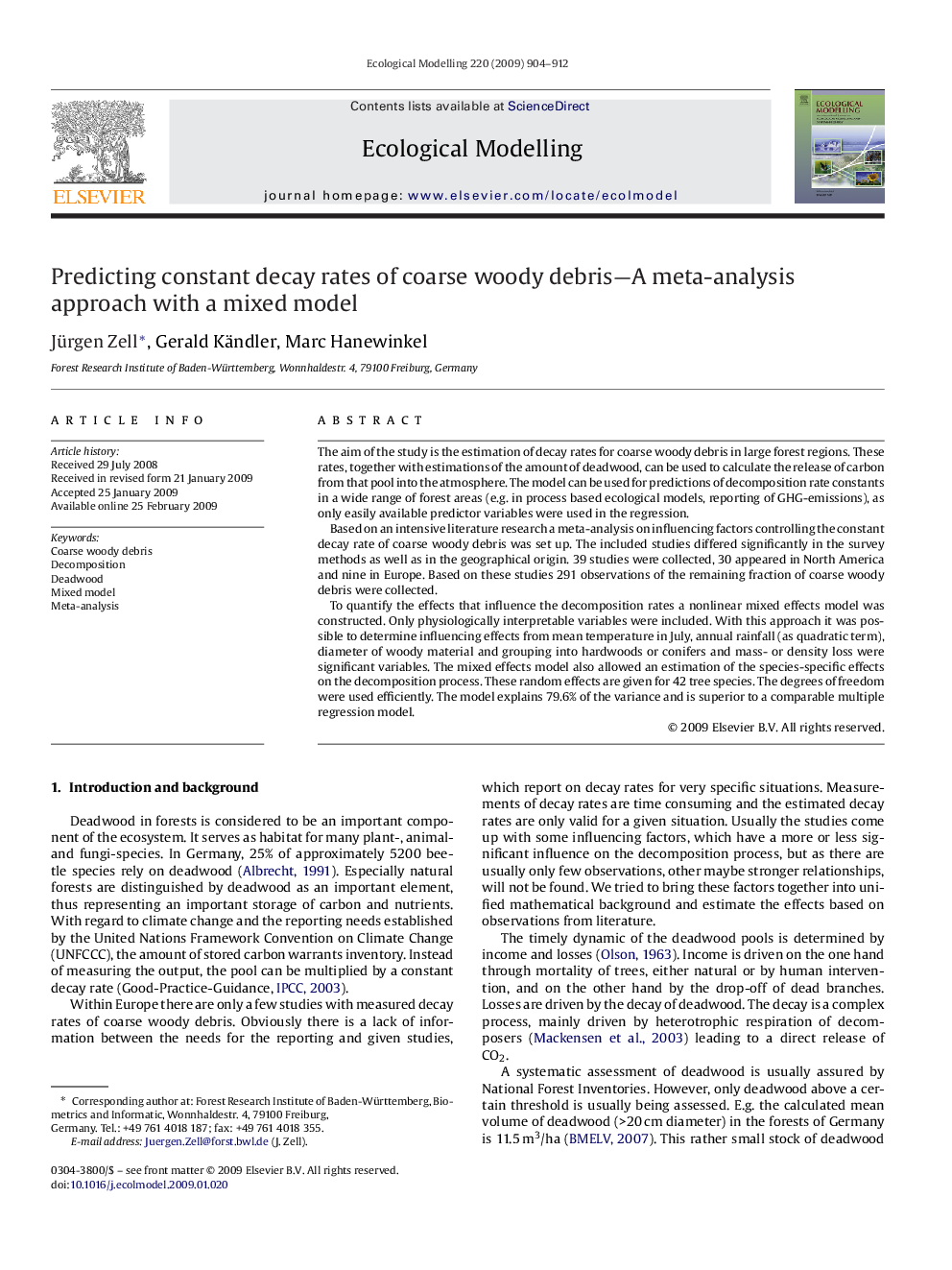| Article ID | Journal | Published Year | Pages | File Type |
|---|---|---|---|---|
| 4377594 | Ecological Modelling | 2009 | 9 Pages |
The aim of the study is the estimation of decay rates for coarse woody debris in large forest regions. These rates, together with estimations of the amount of deadwood, can be used to calculate the release of carbon from that pool into the atmosphere. The model can be used for predictions of decomposition rate constants in a wide range of forest areas (e.g. in process based ecological models, reporting of GHG-emissions), as only easily available predictor variables were used in the regression.Based on an intensive literature research a meta-analysis on influencing factors controlling the constant decay rate of coarse woody debris was set up. The included studies differed significantly in the survey methods as well as in the geographical origin. 39 studies were collected, 30 appeared in North America and nine in Europe. Based on these studies 291 observations of the remaining fraction of coarse woody debris were collected.To quantify the effects that influence the decomposition rates a nonlinear mixed effects model was constructed. Only physiologically interpretable variables were included. With this approach it was possible to determine influencing effects from mean temperature in July, annual rainfall (as quadratic term), diameter of woody material and grouping into hardwoods or conifers and mass- or density loss were significant variables. The mixed effects model also allowed an estimation of the species-specific effects on the decomposition process. These random effects are given for 42 tree species. The degrees of freedom were used efficiently. The model explains 79.6% of the variance and is superior to a comparable multiple regression model.
